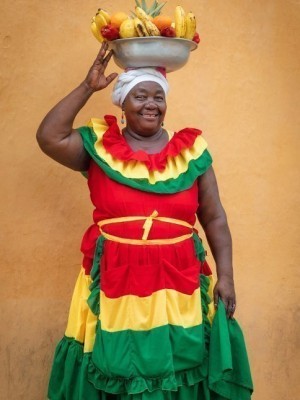

Embark on a fantastic tour of Colombia. Discover the capital Bogotá, the lush, green Coffee Region, innovative Medellín and round it all off on the Caribbean coast in historic Cartagena.
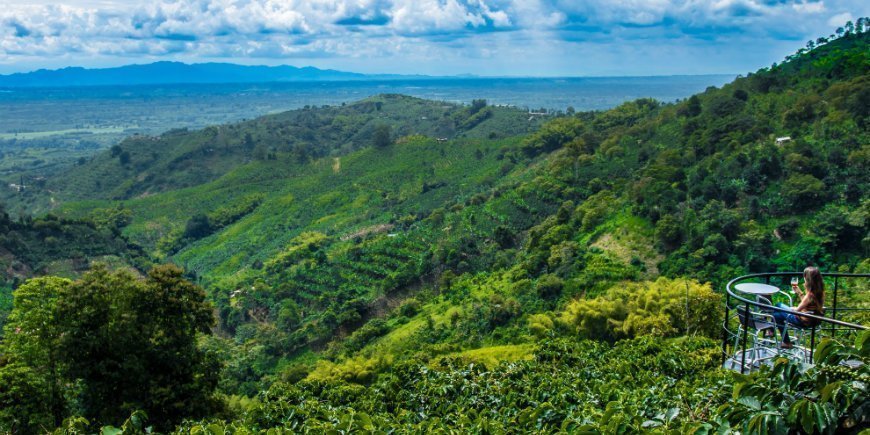
Lush, green coffee plantations wherever you look.
Idyll, taste and charm are the main ingredients of the Colombian coffee region around Armenia.
But the area offers so much more than that!
Welcome to the Colombian coffee mecca!
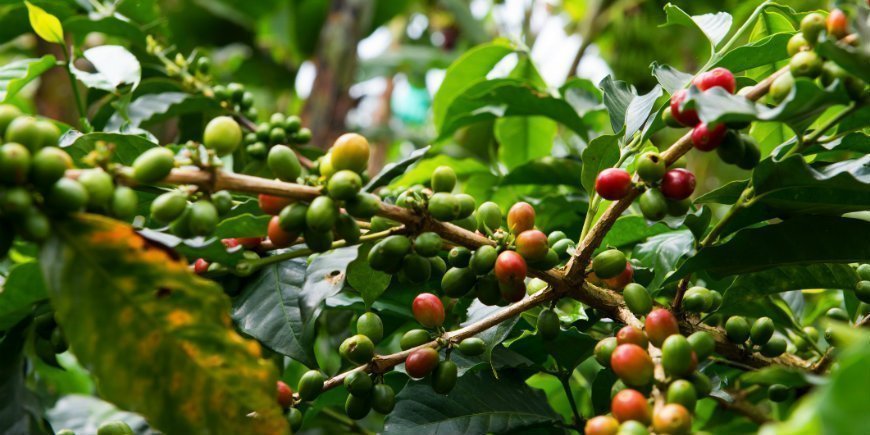
The Latin American country, Colombia, is one of the best in the world when it comes to the golden drops. Coffee.
Exquisite taste, exquisite quality and exquisite experiences are what Colombia has to offer when it comes to one of our best friends at the start of the day.
Coffee plantations are said to have emerged when Jesuit priests came to the country in the mid-16th century to the 17th century, while exports began in 1835.
Today, Colombian coffee is synonymous with high quality and taste. The country accounted for 7.9% of the world’s coffee exports in 2017, measured in revenue, and is the fourth largest coffee exporting country, surpassed only by Brazil, Vietnam and Germany.
There are more than 550,000 coffee farmers in Colombia, and the Colombian coffee grows mainly in the Medellín region, where Armenia is located, and around Bogotá.
The bulk of the coffee is sold to the National Federation of Coffee Growers, headed for many years by the fictional Juan Valdez.
The arabica bean was traditionally cultivated at the Colombian coffee plantations, and coffee production is still entirely based on Arabica beans – as one of the few countries in the world where this is the case.
So the arabica bean is considered to be the superior bean!
The bean produces a nicer, more flavourful cup of coffee than the robusta bean. It has a balanced and stronger acidity, less caffeine and is sweeter and lighter in flavour than the robusta bean.
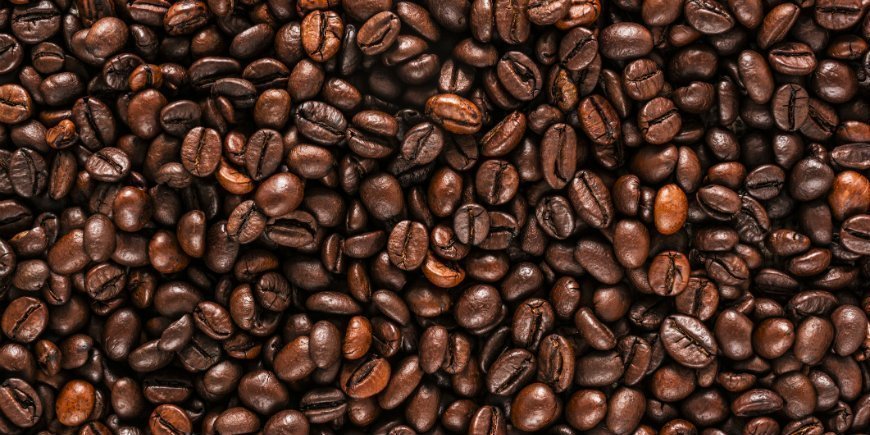
When you visit the area, you gain an interesting insight into how Colombian coffee is produced. The laborious process presented gives you insight into all the procedures in the coffee-making process, from the hand picking of the beans to the finished coffee.
After the interesting presentation of how the entire process takes place, you get to taste the golden drops. You can also buy the delicious beans so that, once home again, you can dream your way back to the idyllic coffee region of Colombia.
Besides learning about how the coffee is produced, you can also enjoy other traditional experiences with the coffee in the Armenia area.
If you are travelling with children, these experiences add that extra spice – and adults are guaranteed to have fun, too.
Roller coasters, bumper cars and coffee by the bucket load are the coffee park’s main draws.
The theme park is located just outside the city of Armenia and offers all kinds of amusements mixed with the history of coffee, a coffee museum and food stalls with a coffee theme.
So there is something for children and adults alike here, and the kids can burn off a lot of that excess energy!
Once a year, there is a very special parade.
The Yipao Jeep parades, best known in Armenia and Calarcá (just outside Armenia), provide a cultural insight into the coffee region. There is a procession of Willys Jeeps, which were imported from the United States in 1946 to drive coffee and goods in the mountains through the streets of the cities.
When the traditional cars drive through the streets, they are packed with goods that take you back to the 1940s. And if that weren’t enough, daring Colombians perform acrobatic moves on the back wheels of the cars.
The Willys Jeeps have become part of the cultural heritage, with links to the Colombian coffee culture to this day.
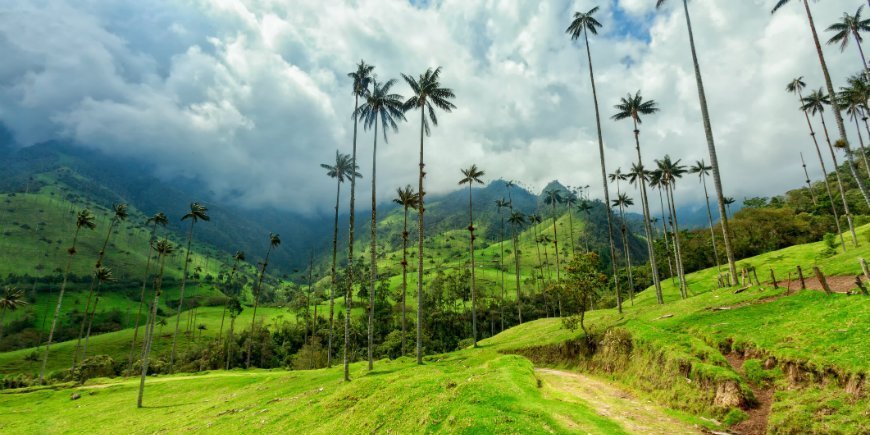
Colombia’s coffee region offers more than just amazing coffee experiences.
Around a 30-minute to an hour’s drive from Armenia, you can enjoy scenic nature experiences, explore cosy towns or see unique architecture.
The Cocora Valley is a must if you are in the coffee region.
The scenery of the valley is breathtaking, and you can experience it at close range on a short hike that most people can manage.
The Cocora Valley is part of Los Nevados National Park with its distinctive wax palms. The wax palms can grow up to a height of 60 m and are known as Colombia’s national tree.
In addition to the tall trees, there are also beautiful, colourful birds such as the yellow-eared parrot, which lives in the wax palms and loves the fruit of the trees.
There streets in the heart of the small town of Filandia are lined with one brightly-painted house after another, in all the colours of the rainbow.
Go for a stroll in the lovely town centre, where you can’t miss the fascinating blue-and-white colonial church on the town’s central square.
The town is surrounded by various coffee plantations, which you can see from the La Colina Iluminada vantage point, a 19-metre-high wooden structure.
And remember to take pictures – both mental images and with your camera – of the incredibly beautiful view.
Like Filandia, Salento is perfectly charming.
The town offers beautiful architecture and several colourful buildings. Try, for example, the traditional game of Tejo, buy some handicrafts from La Aldea del Artesano, drink a cup of coffee at one of Salento’s cafés or eat the town’s speciality, which is trout in a creamy garlic/cheese sauce.
Salento is a town you must not miss!


Embark on a fantastic tour of Colombia. Discover the capital Bogotá, the lush, green Coffee Region, innovative Medellín and round it all off on the Caribbean coast in historic Cartagena.
Colombia’s coffee is exceptional. And so are the towns and cities of the coffee region.
If you have any questions about the coffee mecca on our tours to Colombia, please do not hesitate to contact our travel specialists, who are on hand to help you on your way to your next Latin American adventure.
TourCompass